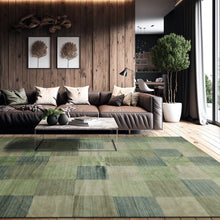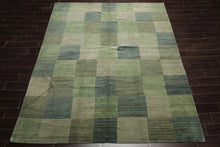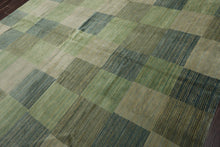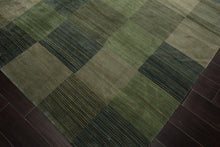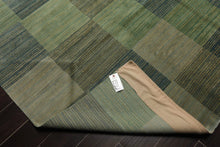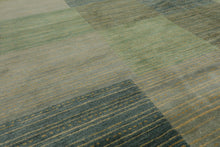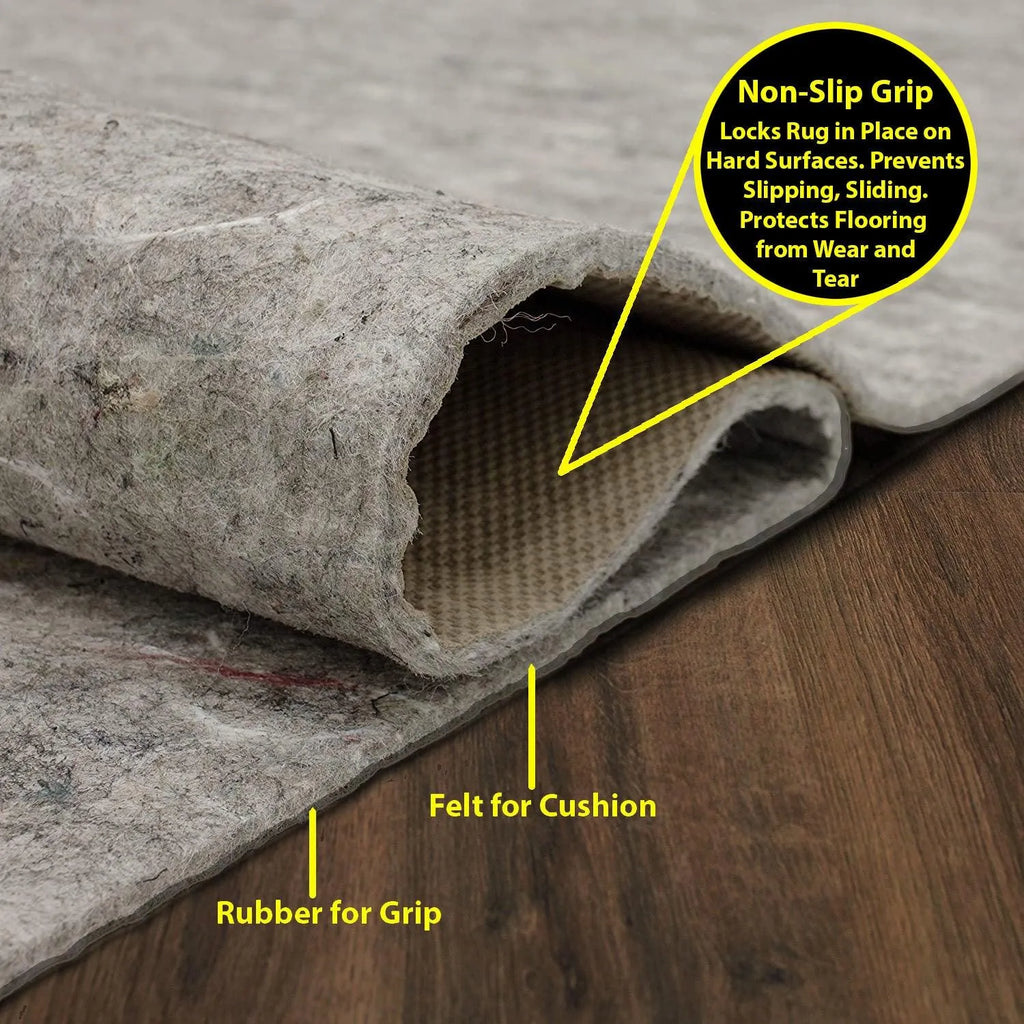8' 2''x9' 10'' Hand Knotted Tibetan 100% Wool Michaelian & Kohlberg Modern & Contemporary Oriental Area Rug Aqua, Gray Color
Oriental Rug Of Houston
ORH18007
Loading...
Regular price
$ 6,000.00
$ 2,000.00
Sale
Frequently Bought Together
This is a beautiful Aqua, Gray, Blue, Gold, Brown, Orange, Green, Multi Swiss Wash Hand Knotted Michaelian & Kohlberg Wool Rug. The wool not only adds to rug's durability, but also provides dirt repelling quality and thermal insulation. Swiss wash is a unique finishing treatment provided to rugs in Switzerland. It implies a thorough cleaning that removes all loose fibers and debris from the rug. The final product is a rug with a singular wool finish. The difference is comparable to the one between basic manicure and Shellac manicure. The color block design with series of lines across it create a look that is both modern and contemporary. Its elegant style is easy to decorate with and perfect for living room, dining room, bedroom or anywhere in the residence or office.
- Exact Size: 8' 2''x9' 10''
- Weave: Hand Knotted Rug
- Yarn: 100% Wool
- Color: Aqua, Gray, Blue, Gold, Brown, Orange, Aqua, Green, Multi
- Origin: Nepal
- Pile Height: 0.5 inch
- Condition: New
- Rug#: ORH18007
About Michaelian & Kohlberg Rugs: Michaelian & Kohlberg have been a source of fine hand knotted rugs since 1921. Their name is synonymous with rugs that combine time honored weaving techniques, innovative designs, and sophisticated color palette. With designs that range from traditional to ultra contemporary, Michaelian & Kohlberg carpets create a beautiful and luxurious foundation for today’s finest interiors. Since the 1980's, Michaelian and Kohlberg has been involved in projects that have been credited for reviving the art and craft of natural dyeing and hand-spinning in Turkey, India, Nepal, China, Afghanistan and elsewhere. In fact, the Metropolitan Museum of Art, New York actively hosts many antique rugs from its founder Frank Michaelian's collection. Today, Michaelian & Kohlberg rugs are standard bearers of quality, technique, and innovative design in the hand knotted flooring industry. Hand Knotted Oriental Area Rug 100% Wool. Its elegant style is easy to decorate with and perfect for living room, dining room, bedroom or anywhere in the residence or office.
Story Behind the Art
For centuries Tibetans have used rugs for decorative and functional purposes, drawing upon geometric patterns, auspicious symbols, real and mythical animals, and natural imagery to create beautiful, colorful designs. But it was only after 1959 with the Chinese invasion of Tibet and the growth of Tibetan diaspora in Nepal and Tibet that Tibetan rug weaving underwent a crucial commercial revival. In the 1970s, Tibetan rugs rose to prominence and Nepalese artisans, drafted in to keep up with the rising demand, became the mainstay of the Tibetan rug weaving traditions. While either Turkish knot or the Persian knot (Senneh knot) is used to create the pile or depth of a rug in most of Asia, the Tibetan rug utilizes a slit-loop technique called the Tibetan knot. Here rugs are woven by wrapping a continues length of yarn over a rod laid across the warps stretched on the loom. When the rod has been wrapped for its entire length, a knife is slid along the rod, cutting the wrapped yarn into two rows of pile tufts. The resultant pile is a wonderful mix of depth, texture and richness. Traditional Tibetan rug motifs generally reflect the importance of Buddhist religion in Tibetan art and culture. Many design elements of Chinese origin like the phoenix, dragon, and lotus symbols alongside motifs from Chinese decorative tradition have also been assimilated in the rug repertoire of this region. In modern times, designs featured in Tibetan, Nepalese rugs (those woven by Tibetan refugees in Nepal) and Indo-Tibetans (woven in India) range from Westernized adaptations of traditional Tibetan motifs (such as branching floral designs and snow lions) to a large mixture of foreign and modern free-form patterns.










